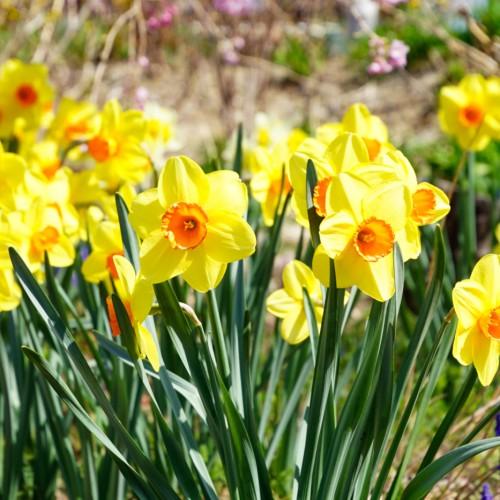
large-cupped daffodil
Narcissus 'Fortissimo'
Cycle:
Perennial
Watering:
Average
Hardiness Zone:
3 - 8
Flowers:
Flowers In Spring
Sun:
Full sun,part shade
Leaf:
Yes
Growth Rate:
High
Maintenance:
Low
Drought Tolerant:
Yes
Care Level:
Medium
watering
The large-cupped daffodil (Narcissus 'Fortissimo') has moderate watering needs. As it is a spring-flowering plant, it prefers light and infrequent watering during its growing season. During the months of April and May, it should be watered about once or twice per week; this should be enough to keep the soil moist, but not soggy. If the weather is particularly dry, the plant may need additional water. After the flower has finished blossoming, the water needs of the plant will decrease. During the summer months, it should be watered lightly every 1-2 weeks. In the autumn, the plant should be watered about once a month, ensuring the soil stays moist.
sunlight
The large-cupped daffodil (Narcissus 'Fortissimo') prefers full sunlight to part shade, but in hotter climates can tolerate partial shade. It should receive at least 4 hours of direct sunlight daily. The plant will flower best when given plenty of sunny days. Ideally, the daffodil should be placed in a sunny location that gets the morning sun. This species thrives well in climates with mild temperatures in the spring and autumn. During the hottest part of the day in summer, the plant should be protected from harmful ultraviolet rays and excessive heat.
pruning
Large-cupped daffodils (Narcissus 'Fortissimo') should be pruned in late winter or early spring just as the new leaves begin to emerge. Careful removal of dead and diseased stems should be done first, followed by cutting back the leaves to 30-45cm (12-18 inches) above the ground. This encourages strong new growth, which will lead to larger flower heads and an abundance of blooms in the season ahead. It's important not to prune any leaves beyond the growing tip as this limits future growth. Removing the dead flowers after they have faded will also help the plant produce more flowers for the upcoming season.
